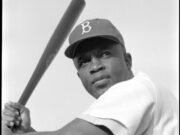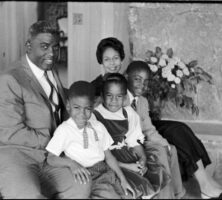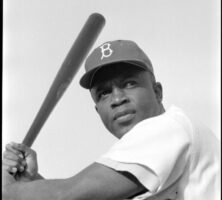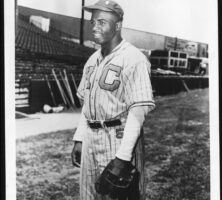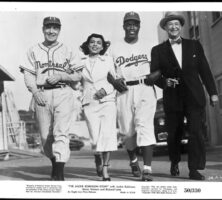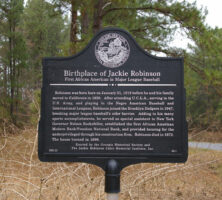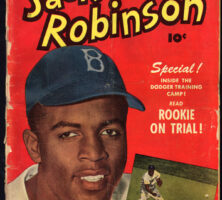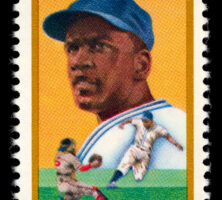Jackie Robinson became the first Black man to play major league baseball in the twentieth century when he debuted with the Brooklyn Dodgers on April 15, 1947. He went on to become the first Black player to be named Rookie of the Year, to win the Most Valuable Player award, and to be inducted into major league baseball’s Hall of Fame.
Early Life
Jack “Jackie” Roosevelt Robinson was born near Cairo on January 31, 1919. He was the fifth child and fourth son of Mallie and Jerry Robinson, tenant workers on the plantation of James Madison Sasser in Grady County, just a few miles north of the Florida state line. Robinson’s parents had a troubled marriage, and when Jerry left his wife and children for another woman, Mallie’s relationship with Sasser deteriorated until they were evicted from their cabin and forced to seek work elsewhere. In May 1920 Robinson’s mother decided to leave Georgia altogether and took a train to Pasadena, California, where her half brother lived. She worked as a maid to support her children, and they remained poor. But young Robinson distinguished himself as a high school athlete, both in track and in baseball, and even more so at Pasadena Junior College, where he excelled at football as well.
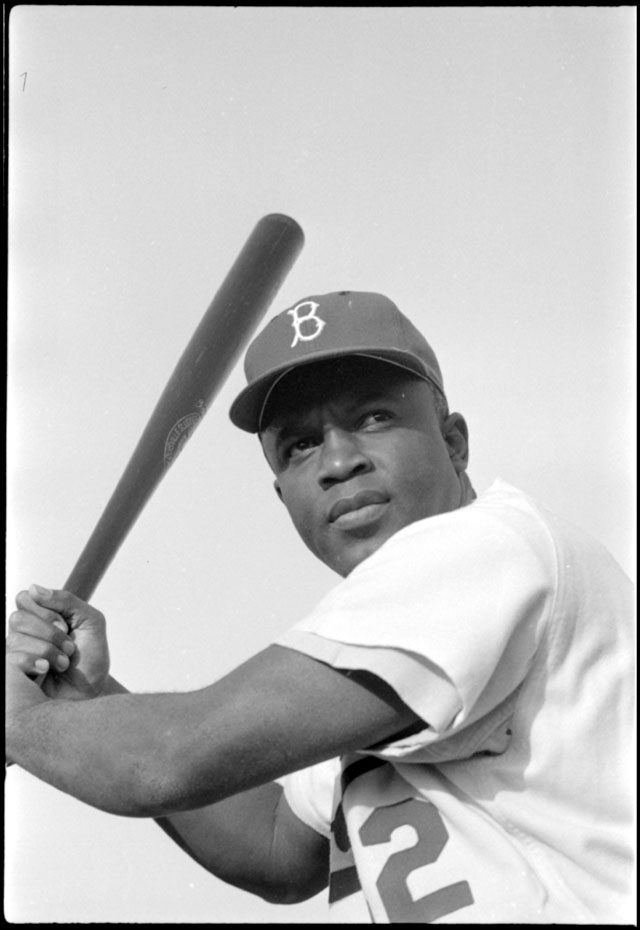
Courtesy of Library of Congress, Prints and Photographs Division
College and Early Professional Career
In 1939 Robinson entered the University of California at Los Angeles (UCLA), where he became the first student ever to earn letters in four different sports. He was a star running back on the football team, dubbed the “greatest ball carrier” in the game by Sporting News. As a basketball player he led the Pacific Coast Conference in scoring for two seasons. Robinson won the National Collegiate Athletic Association, or NCAA, broad jump title in 1940. He won swimming championships while at UCLA and reached the semifinals of the national African American tennis tournament. He briefly played professional football for the Honolulu Bears in 1941, leaving Hawaii just two days before the Japanese attacked Pearl Harbor (the event that would prompt U.S. entry into World War II [1941-45]). Robinson was drafted into the army in 1942 and served without seeing combat duty due to an ankle injury. He was honorably discharged in November 1944. Robinson married Rachel Isum, a nursing student he had met at UCLA, in 1946. They had three children together.
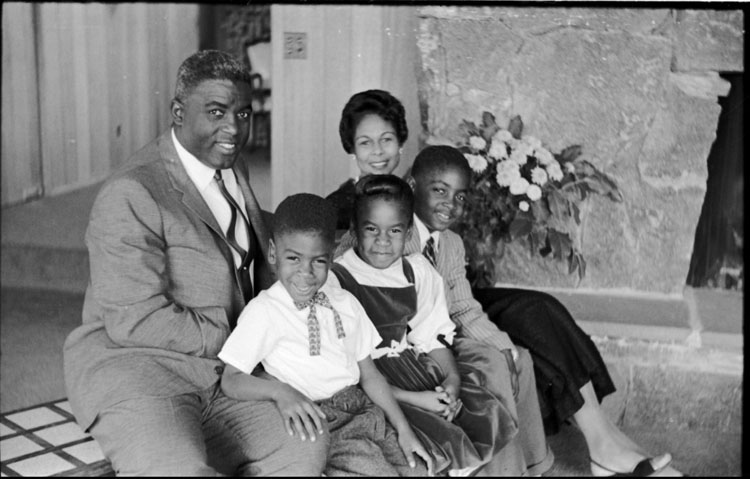
Courtesy of Library of Congress, Prints and Photographs Division
In New York the Brooklyn Dodgers’ general manager, Branch Rickey, quietly sought to integrate major league baseball in the 1940s. He started scouting Black players under the pretense of assembling a Negro League team to be owned by the Dodgers, but he was actually looking for the right player to integrate the game.
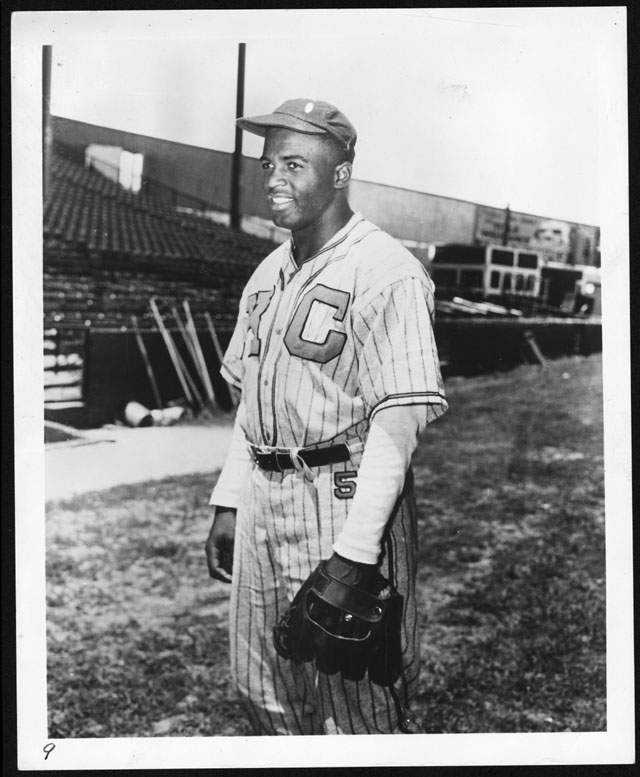
Courtesy of Library of Congress, Prints and Photographs Division
In the summer of 1945 Rickey discovered Robinson playing shortstop for the Negro League’s Kansas City Monarchs. Believing Robinson would find a warmer reception in Canada, Rickey assigned him to play for Montreal during the 1946 season as a warm-up for his rookie season in the majors the following year. Rickey’s hunch was correct. Robinson, the first Black player in the International League in fifty-seven years, was exceedingly popular with the fans as he led the league in batting and runs scored, and his team won the pennant.
Major League Career
In 1947 Rickey invited Robinson to take the historic step of playing for his Brooklyn Dodgers in the major leagues. Rickey asked Robinson to remain passive in the face of the discrimination and cruelty he was sure to encounter. Robinson agreed, though to do so was very much out of character; he was once court-martialed in the army for refusing to move to the back of a bus. Rickey and Robinson had an understanding that Robinson would be silent for three seasons. Robinson was widely revered for his show of restraint in the face of jeers, slurs, and discrimination from fans, opposing players, and even his own teammates. During spring training, before appearing in his first major league game, Dodger teammates started a petition to prevent him from playing. The team’s manager, Leo Durocher, put a stop to their efforts. Still, Robinson often had separate accommodations when the team was traveling.
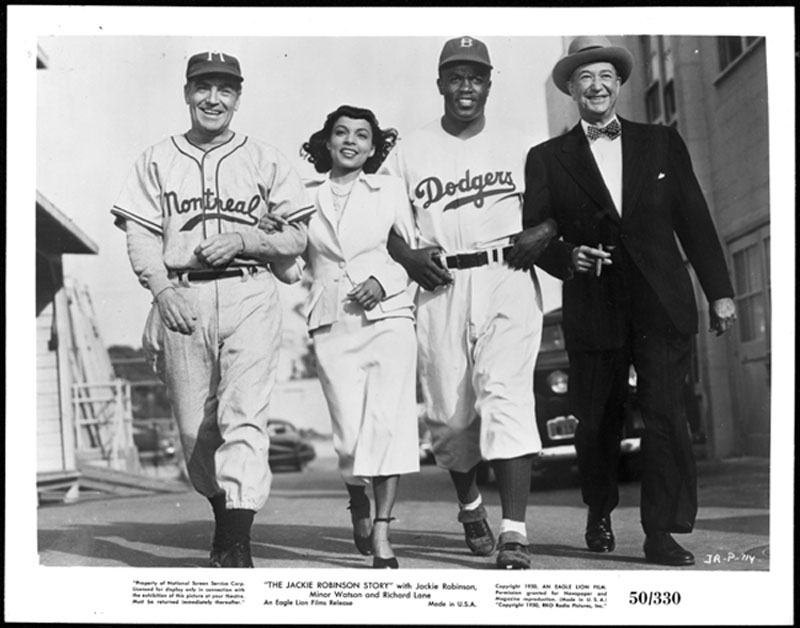
Library of Congress, Broadcasting and Recorded Sound Division
Robinson excelled on the field during his first season, despite the difficult environment. He was selected as the league’s most outstanding rookie, though he was playing first base instead of his usual position at second base. Robinson led the National League in steals, with twenty-nine. At the end of his first season, a national poll found him to be the second most popular celebrity in the United States, behind the singer Bing Crosby. He was named the National League’s “Rookie of the Year,” honored with a “Jackie Robinson Day” for Dodger fans, and featured on the cover of Time magazine.
In 1949 Robinson returned to Georgia when the Dodgers played a series of exhibition games in Macon and Atlanta. The tour met vocal opposition from Ku Klux Klansmen, who vowed to keep an integrated team from facing the all-white Atlanta Crackers. Nevertheless, Robinson was met by enthusiastic fans and drew the largest crowds ever assembled at that time for a sporting event in the state. On April 10, more than 25,000 spectators—10,000 over capacity—filled the Ponce de Leon Ballpark for the last of three games against the Crackers. Many of those were African Americans from Cairo and other parts of south Georgia, who came in busloads to see the local hero play.
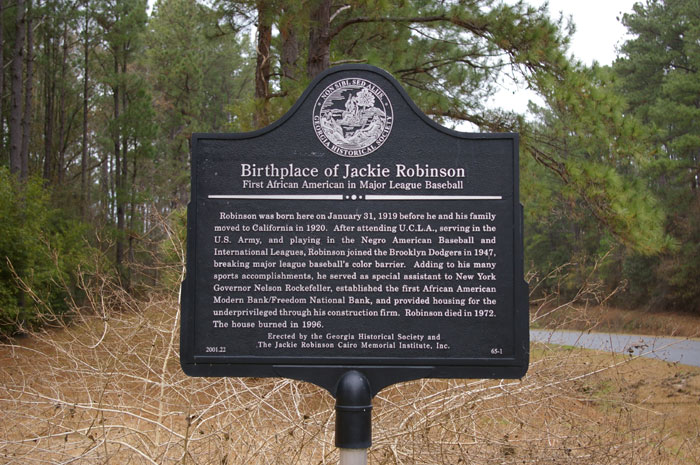
Courtesy of Georgia Info, Digital Library of Georgia.
Robinson was named the National League’s Most Valuable Player in 1949, winning the batting title that season with a .342 average. He stole home base nineteen times in his career, and in 1954, when he was thirty-five years old, he became the first National Leaguer in nearly twenty-six years to steal his way around the bases. A strong-fielding second baseman, he and Dodger shortstop Pee Wee Reese formed one of the game’s greatest double-play combinations. In 1956 he was traded to the New York Giants, but he retired from baseball instead of accepting the trade. Robinson was inducted into baseball’s Hall of Fame in 1962.
Life after Baseball
Already involved in civil rights activity before his retirement, Robinson became even more active in the late 1950s and early 1960s. He became a vocal supporter of Martin Luther King Jr. and the National Association for the Advancement of Colored People. At King’s request Robinson went to Albany to speak after two Black churches were burned there in August 1962 at the height of the Albany Movement. Robinson headed a national campaign to raise money to rebuild the Albany churches and a burned church in Lee County, ultimately collecting $50,000. Later that summer, he drew new attention to the movement by speaking at the annual convention of the Southern Christian Leadership Conference in Birmingham, Alabama.
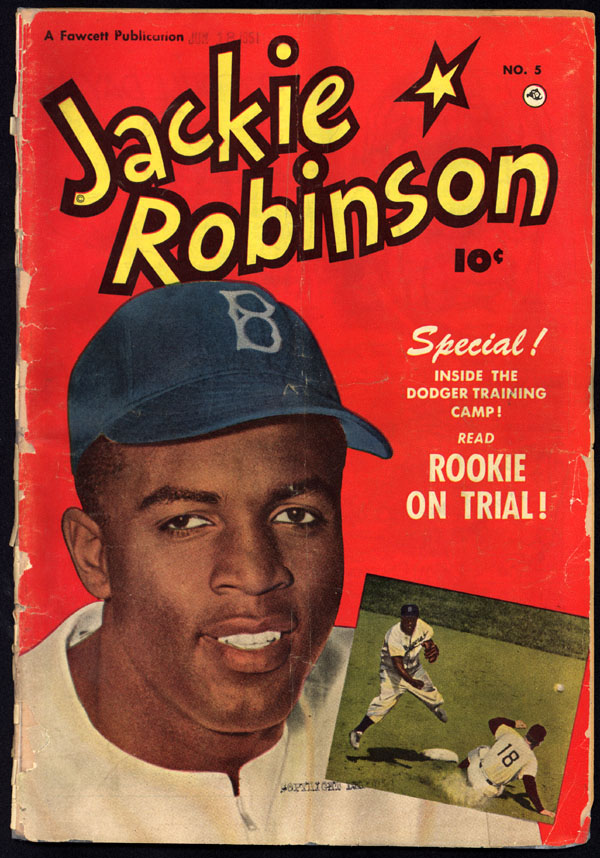
Courtesy of Library of Congress, Serial and Government Publications Division
Robinson died of a heart attack on October 24, 1972, at the age of fifty-three. After his death he was the subject of the Broadway musical The First. In 1987 major league baseball named its Rookie of the Year award after him. On April 15, 2004, the first annual “Jackie Robinson Day” featured tributes before all games, including that of the Atlanta Braves, who played the New York Mets in Shea Stadium. In March 2005 U.S. president George W. Bush awarded the Congressional Gold Medal to Robinson. His widow, Rachel, accepted the medal, the highest honor the U.S. Congress can award a civilian, during a ceremony held in Washington, D.C.


